- Home
- James Redfield
The Secret of Shambhala: In Search of the Eleventh Insight Page 6
The Secret of Shambhala: In Search of the Eleventh Insight Read online
Page 6
I looked over at Yin. He was staring intently at the road.
“Where are we heading?” I asked.
Without looking at me, he said, “This is a shortcut to the Friendship Highway. We must go southwest to Tingri, near Mount Everest. The drive will take most of the day. We will also be going up in altitude.”
“Is that area safe?”
Yin glanced at me. “We will be very careful. We’re going to find Mr. Hanh.”
“Who is he?”
“He knows the most about the First Extension of prayer-energy you must learn. He is from Thailand, and he is very educated.”
I shook my head and looked away. “I’m not sure I understand these extensions. What are they?”
“You know that you have an energy field, correct? A prayer-field flowing out from you all the time.”
“Yes.”
“And you know that this field has an effect on the world, on what happens? You know it can be either small and weak or extensive and strong.”
“Yes, I suppose.”
“Well, there are precise ways to extend and expand your field so that you can become more creative and powerful. The legends say that eventually all humans will know how to do this. But you must do it now if you expect to get to Shambhala and find Wil.”
“Can you already perform these extensions?” I asked.
Yin frowned. “I did not say that.”
I just looked at him. This was great. How was I supposed to learn to do this if even Yin had trouble?
For hours we drove without talking, eating nuts and vegetables as we rode along, stopping only once at a truck stop for gas. Well after dark, we passed through Tingri.
“We must be very careful here,” Yin said. “We are near the Rongphu monastery and the Everest base camp, and there will be Chinese soldiers observing the tourists and climbers. But we will also be able to see incredible views of the north face of Everest.”
Yin made several turns until he came to an area of old wooden buildings. Beyond them was a simple mud-brick house.
The yard around Hanh’s dwelling was immaculate, with carefully planted beds and rock gardens. As we drove up, a large man in a colorful, hand-embroidered robe walked out on the stoop. He appeared to be in his sixties, but he moved like a person much younger. His head was completely shaved.
Yin waved as the man strained to see who it was. When he recognized Yin, he burst into a smile and walked toward us as we got out of the Jeep.
The two men spoke for a moment in Tibetan, then Yin pointed to me and said, “This is my American friend.”
I told Hanh my name, and he bowed slightly and grasped my hand.
“Welcome,” he said. “Please come in.”
As Hanh walked back to the house, Yin reached inside the Jeep and grabbed his pack. “Bring your satchel,” he said.
The house inside was modest but filled with colorful Tibetan paintings and rugs. We went into a small sitting area, and from where I was I could see most of the other rooms. To the left was a small kitchen and a bedroom, and to the right was another room that had the look of a treatment area of some kind. In the center of the room was a massage or examination table, and lining one wall were cabinets and a small sink.
Yin said something else to Hanh in Tibetan, and I heard him repeat my name. Hanh leaned forward with a new alertness. He glanced over at me and took a large breath.
“You are very fearful,” Hanh said, looking me over closely.
“No kidding,” I replied.
Hanh chuckled at my sarcasm. “We must do something about that if you are going to complete your journey.”
He walked around me, surveying my body.
“Those in Shambhala,” he began, “live differently from most other humans. They always have. In fact, through the millennia, there has been a great gulf between the energy levels of most people and those in Shambhala. Yet in recent times, as all humans have evolved and increased their consciousness, this distance has closed, but it is still very far apart.”
As Hanh was talking, I glanced at Yin. He seemed to be as nervous as I was.
Hanh picked up on it too. “Yin is as fearful as you are,” he said. “But he knows that this fear can be handled. I don’t think you realize that yet. You must begin to act and think as those in Shambhala do. You must first cultivate and then stabilize your energy.”
Hanh stopped and concentrated on looking at my body again, then smiled.
“You have had many experiences,” he said. “You should be stronger.”
“Maybe I don’t understand energy well enough,” I replied.
“Oh no, you understand.” Hanh smiled broadly. “You just don’t want to change the way you live. You want to get excited about the ideas and then live unconsciously, more or less the way you’ve always done.”
This conversation was not going the way I wanted, and my fear was being replaced by a mild irritation.
As I stood there, Hanh walked around me several more times, still gazing intently up and down my body.
“What are you looking at?” I asked.
“When I am assessing someone’s energy level, I first look at posture,” Hanh said matter-of-factly. “Yours is not too bad at this point, but you had to work on it, didn’t you?”
His question was very perceptive. As a youth, I grew very quickly one year and as a result slumped terribly. My back was always tired and ached, and it only improved when I began to practice a few basic yoga positions every morning.
“The energy still doesn’t flow up your body very well,” Hanh added.
“You can tell that by looking at me?” I responded.
“And by feeling you. The amount and strength of your energy feels like the degree of presence you have in the room. Surely you must have experienced someone who came into a room and had presence or charisma.”
“Sure, of course.” I thought again about the man at the hotel pool in Kathmandu.
“The more energy one has, the more others feel that person’s presence. Often this is energy that winds up being displayed through the ego, and so feels strong at first, then dissipates very rapidly. But with others, this is a genuine and constant energy that remains reliable.”
I nodded.
“One thing in your favor is that you are open,” Hanh continued. “You have experienced a mystical opening, a sudden inflow of divine energy, sometime in the past, have you not?”
“Yes,” I said, remembering my experience on the mountain-top in Peru. Even now it remained vivid in my memory. I had been at the end of my rope, certain I was about to be killed by Peruvian soldiers, when all of a sudden I was imbued with an unusual calm, euphoria, and lightness. It was the first time I had experienced what the mystics of various religions have called a transformative state.
“How did the energy fill you?” Hanh asked. “How did it happen exactly?”
“It was a rush of peacefulness, and all my fear went away.”
“How did it move?”
That was a question I had never thought about, but I quickly began to remember. “It seemed to come up my spine and out through the top of my head, lifting my body upward. I felt as if I was floating. As though there was a string pulling me upward from the top of my head.”
Hanh nodded approvingly, then caught my eye. “And how long did it last?”
“Not long,” I replied. “But I have learned how to breathe in the beauty around me in order to rekindle the feeling.”
“What is missing in your practice,” said Hanh, “is breathing in the energy and then consciously maintaining it at a higher level. This is the first extension that you must make. You must keep your energy flowing in more fully. This must be done in a precise manner, taking care that your other actions do not erode your energy field once you have built it up.”
He paused for a moment. “Do you understand? The rest of your life must support your higher energy. You must be congruent.” He glanced at me mischievously. “You must live wisely. Let’s e
at.”
He disappeared into the kitchen, and returned with a platter of vegetables, accompanied by a sauce of some kind. He ushered both Yin and me over to a table and served the vegetables in three small bowls. It soon became clear that the food was all part of the information Hanh was imparting.
As we ate, he continued. “Maintaining higher energy within oneself is impossible if one consumes dead matter as food.”
I looked away, turning off. If this was going to be a lecture on diet, I would just as soon skip it.
My attitude seemed to infuriate Hanh.
“Are you crazy?” he almost shouted. “Your very survival may depend on this information and you won’t put yourself out a little bit to learn this. What do you think? That you can live any way you want and still do important things?”
He became quiet and glanced sideways at me. I realized that the anger was genuine but was also part of his act. I got the impression that he was giving information to me on more than one level. As I looked back at him, I couldn’t help smiling. Hanh was eminently likable.
He patted my shoulder and smiled back at me.
“Most people,” he continued, “are full of energy and enthusiasm in their youth, but then during middle age they lapse into a slow, downhill slide that they pretend not to notice. After all, their friends are slowing down and their kids are active, so they spend more and more time sitting around and eating the foods that taste good.
“Before long, they begin to have nagging complaints and chronic problems such as digestive difficulties or skin irritations that they write off as just age, and then one day they get a serious illness that won’t go away. Usually they go to a doctor who does not stress prevention and they begin to take drugs, and sometimes the problem is helped and sometimes it isn’t. And then, as the years fly by, they get some disease that progressively gets worse, and they realize they are dying. Their only solace is that they think what is happening occurs to everyone—that it is inevitable.
“The terrible thing is that this collapse of energy happens to some extent even to people who otherwise intend to be spiritual.” He leaned over toward me and feigned looking around the room to see if someone was listening. “This includes some of our most respected lamas.”
I wanted to laugh but I dared not.
“If we seek higher energy and at the same time consume foods that rob us of this energy,” Hanh continued, “we get nowhere. We must assess all the energies we routinely allow into our own energy fields, especially foods, and avoid all but the best if our fields are to stay strong.”
He leaned closer to me again. “This is very difficult for most people because we are all addicted to the foods we currently eat, and most are horribly poisonous.”
I looked away.
“I know there is much conflicting information out there about food,” he went on. “But the truth is out there too. Each of us must do the research, make ourselves see the larger picture. We are spiritual beings who come into this world to raise our energy. Yet much of what we find here is designed purely for sensual pleasure and distraction, and much of it saps our energy and pulls us toward physical disintegration. If we really believe we are energetic beings, we must follow a narrow path through these temptations.
“If you look all the way back at evolution, you see that from the beginning we had to experiment with food purely by trial and error, just to figure out which foods were good for us and which would kill us. Eat this plant, survive; eat that one over there, die. At this point in history we’ve figured out what kills us, but we’re only now realizing which foods add to our ultimate longevity and keep our energy high, and which ones ultimately wear us down.”
He paused for a moment as if determining whether I was understanding.
“In Shambhala they see this larger picture,” he continued. “They know who we are as human beings. We look like we are material stuff, flesh and blood, but we are atoms! Pure energy! Your science has proved this fact. When we look deeper into atoms, we first see particles, and then, at deeper levels, the particles themselves disappear into patterns of pure energy, vibrating at a certain level. And if we look at the way we eat from this perspective, we see that what we put in our bodies as food affects our vibrational state. Certain foods increase our energy and vibration and others diminish it. The truth is as simple as that.
“All disease is the result of a drop in vibrational energy, and when our energy drops to a certain point, there are natural forces in the world that are designed to disincorporate our bodies.”
He looked at me as though he had said something very profound.
“Do you mean physically disincorporate?” I asked.
“Yes. Look again at the larger picture. When anything dies—a dog hit by a car, or a person after a long illness—the cells of the body immediately lose their vibration and become very acid in chemistry. That acid state is the signal to the microbes of the world, the viruses, bacteria, and fungi, that it is time to decompose this dead tissue. This is their job in the physical universe. To return a body back to the earth.
“I said earlier,” he went on, “that when our bodies drop in energy because of the kinds of foods we are eating, it makes us susceptible to disease. Here’s how that works. When we eat foods, they are metabolized and leave a waste or ash in our bodies. This ash is either acidic in nature or alkaline, depending on the food. If it is alkaline, then it can be quickly extracted from our bodies with little energy. However, if these waste products are acid, they are very hard for the blood and lymph system to eliminate and they are stored in our organs and tissues as solids—low vibrational crystalline forms that create blocks or disruptions in the vibratory levels of our cells. The more such acid by-products are stored, the more generally acid these tissues become, and guess what?”
He looked at me dramatically again. “A microbe of one type or another appears and senses all this acid and says, ‘Oh, this body is ready to be decomposed.’
“Do you get that? When any organism dies, its body quickly changes to a highly acid environment and is consumed by microbes very quickly. If we begin to resemble this very acid, or death state, then we begin to come under attack from microbes. All human diseases are the result of such an attack.”
What Hanh was saying made perfect sense. A long time ago, I had run across some information about body pH on the Internet. Moreover, I seemed to know it intuitively.
“You’re telling me that what we eat directly sets us up for disease?” I asked.
“Yes, the wrong foods can lower our vibrational level to the point that the forces of nature begin to return our bodies to the earth.”
“What about diseases that aren’t caused by microbes?”
“All disease comes about through microbial action. Your own research in the West is showing that. Various microbes have been found to be associated with the arterial lesions of heart disease, as well as the production of tumors in cancer. But remember, the microbes are just doing what they do. Diets that create the acidic environment are the true cause.”
He paused and then said, “Grasp this fully. We humans are either in an alkaline, high energy state or we are in an acid state, which signals the microbes living within us, or that come by, that we are ready to decompose. Disease is literally a rotting of some part of our bodies because the microbes around us have been given the signal that we are already dead.”
He looked at me mischievously again.
“Sorry to be so blunt,” he said. “But we don’t have much time. The food we eat determines almost entirely which of these two conditions we are in. Generally, foods that leave acid wastes in our body are heavy, overcooked, overprocessed, and sweet, such as meats, flours, pastries, alcohol, coffee, and the sweeter fruits. Alkaline foods are greener, fresher, and more alive, such as fresh vegetables and their juices, leafy greens, sprouts, and fruits like avocado, tomato, grapefruit, and lemons. It could not be more simple. We are spiritual beings in an energetic, spiritual world. Those of you in t
he West might have grown up thinking that cooked meat and processed foods are good for us. But we know now that they create an environment of slow disincorporation that takes its toll on us over time.
“All the debilitating illnesses that plague mankind—arteriosclerosis, stroke, arthritis, AIDS, and especially cancers—exist because we pollute our bodies, which signals the microbes inside that we are ready to break down, deenergize, die. We always wondered why some people exposed to the same microbes don’t get a particular disease. The difference is the inner-body environment. The good news is that even if we have too much acidity in our bodies and begin to decompose, the situation can be reversed if we improve our nutrition and move to an alkaline, higher energy state.”
He was now waving both arms, his eyes wide, still twinkling.
“We are living in the dark ages when it comes to the principles of a vibrant, high-energy body. Human beings are supposed to live more than a hundred and fifty years. But we eat in a way that immediately begins to destroy us. Everywhere, we see people who are disincorporating before our eyes. But it doesn’t have to be that way.”
He paused and took a breath. “It’s not that way in Shambhala.”
After another moment Hanh began to walk around, looking me over one more time.
“So, there you have it,” he concluded. “The legends say that humans will first learn the true nature of foods and what kinds to consume. Then, the legends say, we can fully open up to the inner sources of energy that increase our vibration even more.”
He slid his chair back from the table and looked at me. “You are handling the altitude very well here in Tibet, but I would like for you to rest.”
“That would be nice,” I said. “I’m bushed.”
“Yes,” Yin agreed, “we have had a long day.”
“Make sure you expect a dream,” Hanh added, leading me toward a bedroom.

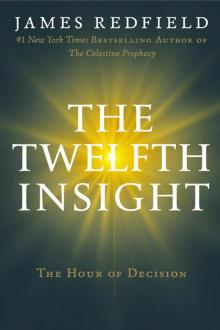 The Twelfth Insight: The Hour of Decision
The Twelfth Insight: The Hour of Decision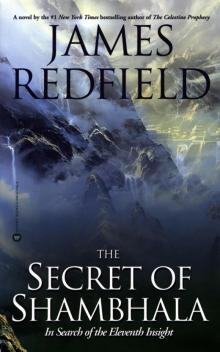 Secret of Shambhala
Secret of Shambhala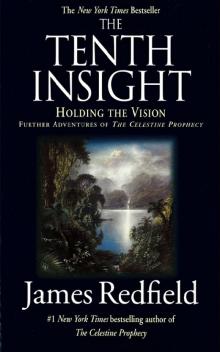 The Tenth Insight: Holding the Vision
The Tenth Insight: Holding the Vision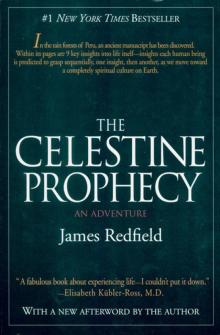 The Celestine Prophecy
The Celestine Prophecy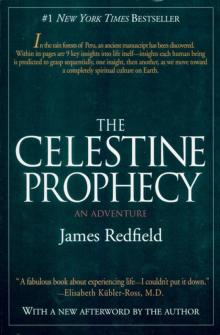 The Celestine Prophecy: An Adventure
The Celestine Prophecy: An Adventure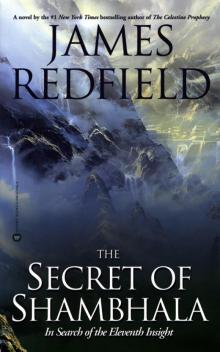 The Secret of Shambhala: In Search of the Eleventh Insight
The Secret of Shambhala: In Search of the Eleventh Insight